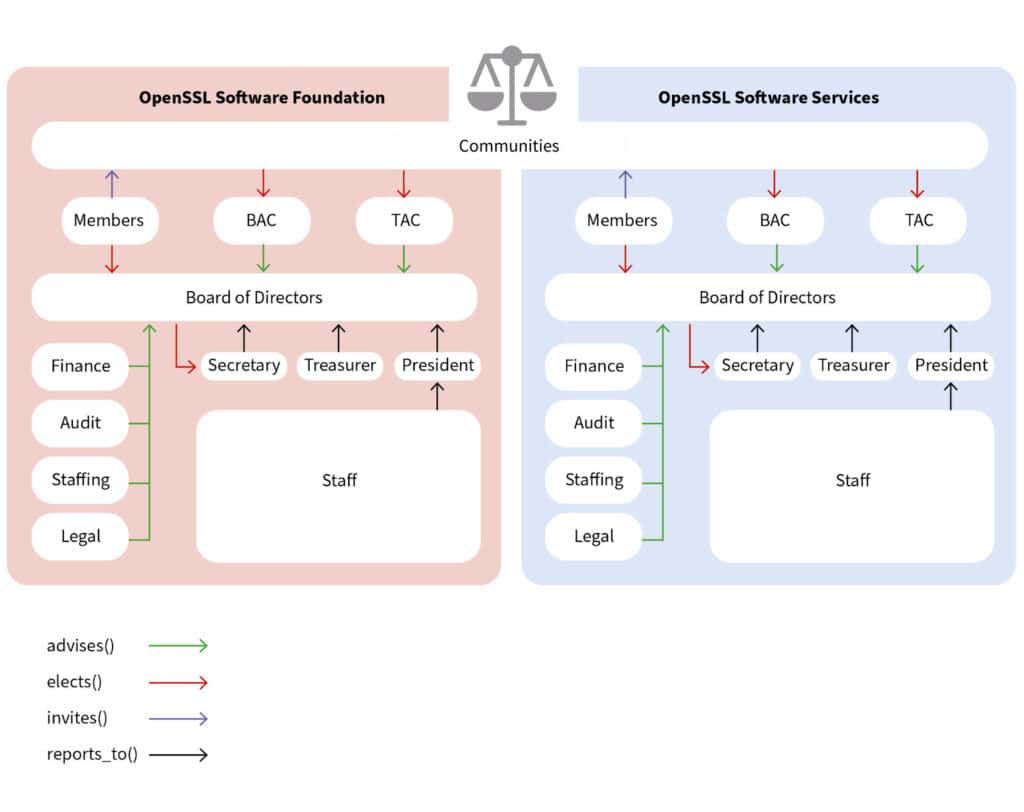The OpenSSL project, a cornerstone of Internet security providing robust encryption libraries used across countless applications worldwide, has unveiled significant changes to its governance structure alongside the inclusion of two new projects under its wing.
The project has now split its governance into two independent but co-equal entities: OpenSSL Foundation and OpenSSL Corporation.
The Foundation will cater to non-commercial communities, while the Corporation will focus on commercial stakeholders. This division ensures that both sectors can operate independently and contribute autonomously to the project’s goals.
With the dissolution of the OpenSSL Management Committee, the project has established separate boards of directors for each new entity, each consisting of ten voting members.
Furthermore, to bolster community interaction, OpenSSL sets up Business Advisory Committees and Technical Advisory Committees for each entity.

The community will elect these committees, ensuring a direct channel for input into the project’s roadmap and reflecting the diverse perspectives of OpenSSL’s user base.
Moreover, OpenSSL has brought two established cryptographic libraries, Bouncy Castle and Cryptlib, under its umbrella.
Bouncy Castle, an open-source cryptographic API, offers FIPS-certified solutions and quantum-ready cryptographic support. Cryptlib provides a comprehensive toolkit integrating world-class encryption services suitable for various hardware platforms and operating systems.
According to the official announcement, this collaboration aims to foster innovation, enhance security standards, and more effectively address common challenges in the cryptographic domain.
The advisory committees’ establishment is scheduled for completion by April 2025, followed by the dissolution of the existing OpenSSL Technical Committee. An OpenSSL user conference is also planned for Europe in the last quarter of 2025.
For more information on these changes and the future direction of OpenSSL, visit the project’s official blog.
